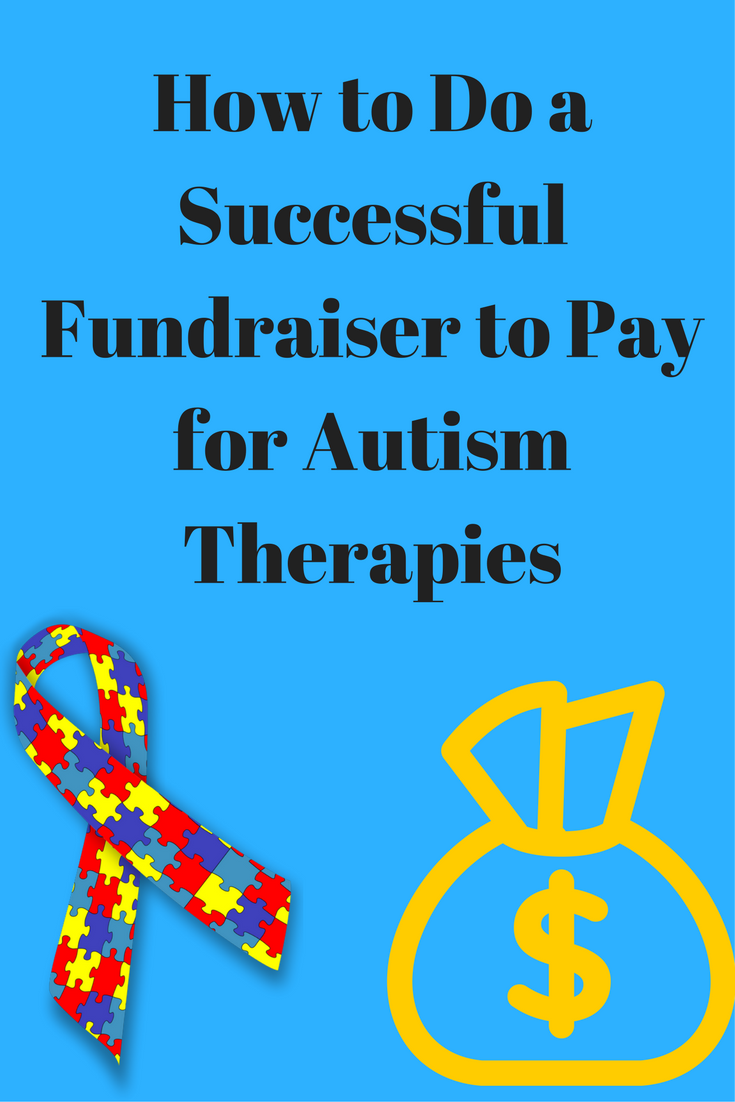Do you have a child with autism who desperately needs therapies you can’t afford? What about doing an autism fundraiser? While it can be a lot of work, autism fundraisers can be very successful and can be one of the best ways to pay for autism therapies for your child. Here is the process you can use to do a successful autism fundraiser or even more than one.
1. Know your why? Why are you fundraising? What exactly will you do with the money once you have raised it?
2. Get prepared to fundraise. In most cases, the money you earn from a fundraiser for autism therapies will still be taxable unless you do a few key things. One of these things is using a separate bank account for the funds and then being very careful to spend the money only on autism therapies. Then you can claim a tax deduction under medical expenses and reduce or in some cases eliminate your taxes. Another way is to either create your own 5013c or find a way to run the fundraiser via the 5013c of someone else and then use the funds for autism therapies. You can also contact the provider or providers of the therapy or therapies you are planning to use and see if you can make arrangements for the money raised by your autism fundraiser to go directly to them. By having the money go directly to the provider and never having the funds touch your bank account you may be able to avoid taxes. However, as with all tax issues, if you think that you may be raising a large amount of money to pay for autism therapies, consult with a tax professional first.
3. Have a goal for how much money you want to raise. Then break it down and determine how much money you will use and for what purpose. You will find that some people may be more motivated to help you, if they know or are able to decide precisely what their money will pay for.
Decide what kind of fundriaser or fundraisers you will do. While you can ask for money directly via something like gofundme.com, personally I’ve found that event fundraisers or fundraisers where you sell a product or products are more successful. People prefer the idea of getting something for their contribution and they are more fun anyway.
4. If you sell a product, sell something that people actually want or need. There are too many fundraisers for cookie dough or wrapping paper that is overpriced and that no one wants. Examples of successful products include candles, food like Tastefully Simple or Wild Tree, tomato plants, essential oils, bath and body products, Tupperware, pampered chef, and other similar items. Look for something that people buy on a regular basis whether it is for a fundraiser or not. You also want to get at least 20% of the purchase price towards your fundraiser. If you need help finding someone who can help you with a product fundraiser, let me know. I have lots of connections.
5. If you do an event fundraiser, plan at least two months ahead and invite everyone. Make it fun and something the whole family will want to attend. Ask a variety of businesses to donate items for an auction or raffle. You can also do a carnival type event and sell tickets, or you could do a dinner and get the food donated.
If your goal is to raise more than $2,000 you will want to consider doing both a product fundraiser and an event fundraiser. You may even want to do 2-3 product fundraisers and more than one event.
In short, fundraising for autism therapies can be a lot of work and effort. However, it can pay off and be well worth it. You will find that more people will help you than you expect.

Did this help you? If so, I would greatly appreciate a share on Facebook, twitter, linkedin, or pinterest.
My Favorite Products (Affiliate links- if you make a purchase I may earn a small commission)
Thrive Market - healthy gluten free, sugar free and speciality online food and household products
Silk and Sonder Monthly Journals and Planners
My Portable Infrared Sauna
Self Care Journal
Martie discounted food
Olipop - healthy soda with probiotics and prebiotics
Digestion Kit
Stress Oils







